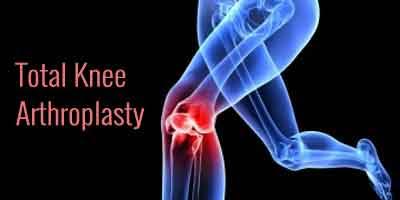- Home
- Editorial
- News
- Practice Guidelines
- Anesthesiology Guidelines
- Cancer Guidelines
- Cardiac Sciences Guidelines
- Critical Care Guidelines
- Dentistry Guidelines
- Dermatology Guidelines
- Diabetes and Endo Guidelines
- Diagnostics Guidelines
- ENT Guidelines
- Featured Practice Guidelines
- Gastroenterology Guidelines
- Geriatrics Guidelines
- Medicine Guidelines
- Nephrology Guidelines
- Neurosciences Guidelines
- Obs and Gynae Guidelines
- Ophthalmology Guidelines
- Orthopaedics Guidelines
- Paediatrics Guidelines
- Psychiatry Guidelines
- Pulmonology Guidelines
- Radiology Guidelines
- Surgery Guidelines
- Urology Guidelines
Study suggests new regime for pain management in total knee arthroplasty: Indian Journal of Orthopaedics

Pain after total knee arthroplasty (TKA) is a big problem in orthopaedic surgery. Although opioids and continuous epidural analgesia remain the major options for the postoperative pain management of TKA, they have some undesirable side effects. Epidural analgesia is technically demanding, and the patient requires close monitoring. Different types of local anesthetic applications can successfully treat TKA pain. Local anesthetics have the advantage of minimizing pain at the source. A recent study published in the Indian Journal of Orthpedics, investigates the efficacy of different local anesthetic application methods on early, (1st day) pain control after total knee arthroplasty.
Aykut Sigirci, Department of Orthopaedics, Evliya Celebi Training and Research Hospital, Kütahya, Turkey analysed 200 patients who underwent unilateral TKA surgery under spinal anesthesia. These patients were randomly assigned into four different groups (fifty in each group) and were administered pain control by different peri- and postoperative regimens. Group A was the control group wherein no postsurgical analgesia was administered to assess spinal anesthesia efficacy; in Group B, only postsurgical one-shot femoral block was applied; in Group C, intraoperative periarticular local anesthetic was applied; in Group D, a combination of the one-shot femoral block and intraoperative periarticular local anesthetics were applied. Demographic data consisting of age, weight, gender and type of deformity of patients were collected. The data did not differ significantly between the four groups.
The author found that in group D patients experienced significantly better postoperative pain relief and were therefore more relaxed in pain (painless time, VAS score) and knee flexion (degrees) than the other patient groups in the 1st postoperative day followup. Painless time of Group D was 10.5 hours and was better than Group C (6.8 hours), Group B (6.2 hours) and Group A (3.0 hours). Group A got the best pain Vas score degrees in the 1st postoperative day which showed the success of combined periarticülar local anesthetic injection and femoral nerve block.
The author concluded that the intraoperative periarticular application of local anesthetics in addition to one-shot femoral block is an efficient way of controlling postsurgical pain after TKA.
The Study has been published in the May-June 2017 issue of the Indian Journal of Orthopaedics, the official journal of Indian Orthopaedic Association.
You can read the full Article by clicking on the link :
Sigirci A. Pain management in total knee arthroplasty by intraoperative local anesthetic application and one-shot femoral block. Indian J Orthop [serial online] 2017 [cited 2017 Jun 13];51:280-5. Available from: http://www.ijoonline.com/text.asp?2017/51/3/280/205688

Disclaimer: This site is primarily intended for healthcare professionals. Any content/information on this website does not replace the advice of medical and/or health professionals and should not be construed as medical/diagnostic advice/endorsement or prescription. Use of this site is subject to our terms of use, privacy policy, advertisement policy. © 2020 Minerva Medical Treatment Pvt Ltd